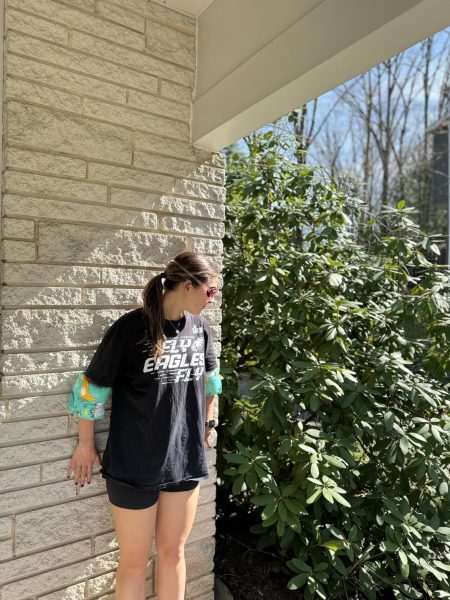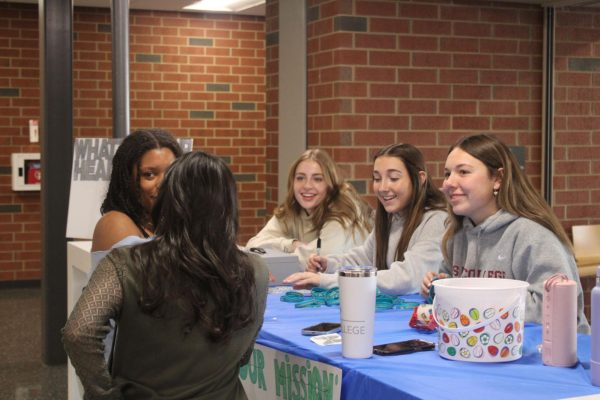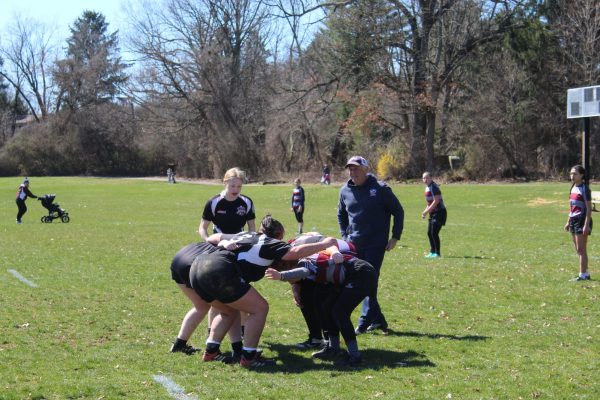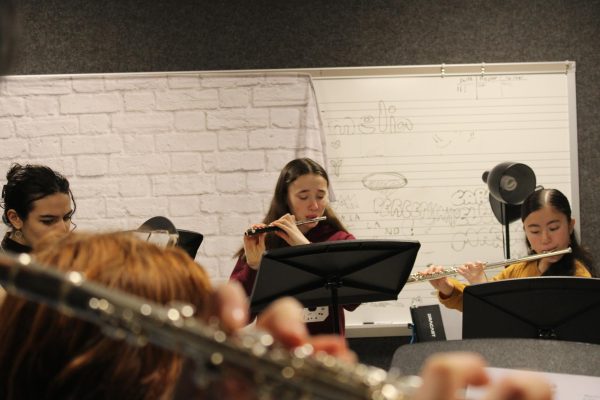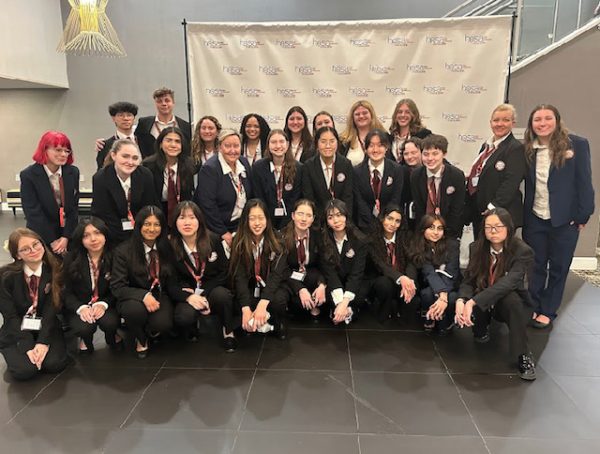First-Time Voters’ Reflection on 2022 Midterms
December 12, 2022
On November 8th, 2022, Americans headed to the polls to vote in the 59th national midterm election. The 2022 midterm also marked 51 years since the 26th Amendment granted 18-year-olds the right to vote.
Historically, midterm elections have gone poorly for the sitting President and his party. Although the polls favored Republicans before election day, the Democratic Party retained control of the Senate. Republicans took control of the House but gained fewer than 12 seats–a far cry from the 50+ majority many predicted earlier this year. So what happened? Most major pollsters predicted a strong showing from the Republican party but ended well off the mark.
So what accounts for the misfire?
According to many analysts, young voters, particularly first-time voters, played a considerable part. In the 2022 Midterm Elections, the 18-29 voter turnout was 27%, the second highest in the past 30 years (NPR). Historically, younger voters tended to support Democratic candidates. According to the Center for Information and Research on Civic Learning and Engagement, “the national youth vote choice for the U.S. House of Representatives was 63% for Democrats, 35% for Republicans” (CIRCLE). Those numbers are the second-highest support Democrats have seen from young voters in over 25 years.
Why weren’t the polls able to record that? A lot of it depends on how polls are conducted. Specifically, polls use landlines and cell phones. This method has obvious issues since young voters have largely abandoned the landline and are not guaranteed to answer their phone calls.
According to Michelle Schellberg, the Centre County Republican Committee Chair, “There are 17,532 registered voters between the ages of 18 and 25.” Voting data for the general election has yet to be released, and isolating the youth vote in SCASD precincts is complicated because we reside in a college town with PSU students living next door. However, Jessica O’Hara, Area Chair for College/Harris Democrats, reports that 187 18-19 olds residing in State College School District precincts voted in the May primary when PSU students were less likely to be part of the count.
A few key issues motivated local first-time voters. For Senior Catherine Frank, there were a lot of important subjects that were very much on the line. However, reproductive rights most motivated her vote.
Senior Avigail Mazer echoed the emphasis on women’s rights. “I think it was the same for a lot of my peers. It was women’s rights and things that affect us, like gun control, education–just topics that directly impact us,” Mazer stated. A PEW Research Report conducted in July 2022 found that over 70% of 18-29-year-olds in the United States support legal abortion in all or most cases, which supports the views expressed by Frank and Mazer.
The Centre County RNC learned about issues of interest to youth voters by meeting with “conservative groups at PSU, Bellefonte High School, and local Young Republicans,” Schellberg wrote in an email. For those voters, the leading issues of concern included “cost of living to include groceries, housing, education, gas and oil for heating their home,” Schellberg wrote.
For Margie Swoboda, the Centre County Democratic Committee Chair, Penn State students were the focus for state and local Democratic candidates. “Those students were looking at, number one, women’s healthcare issues, which also, you know, affect the men. Also, they were looking at climate change, which was really very strong with them. And then the third one was student debt,” Swoboda stated.
Centre County Democrats and Republicans used traditional modes of outreach such as mailings, doorknocking, and phone calls. According to Swoboda, “The rule of thumb is every voter needs to have seven touches.” For the Democrats, the seven contact points included using the aforementioned methods for young and old voters alike.
“We actually door knocked in every single Democratic house in Ferguson, Patton Half Moon, the Borough College Harris, Bellefonte, Spring, Benner Townships, Walker Township at least three times,” Swoboda stated.
Newly registered voters received a welcome postcard from the Centre County Democrats: “When we got the list of newly registered voters, we sent them each a postcard. Welcome to voting here in Center County! Here’s who’s running and where you vote. Thanks for your support,“ Swoboda said.
The Centre County Republicans met with groups of young Republicans and used traditional means of contact. “We also sent low prosperity voters, which includes new voters, letters encouraging them to vote. We sent over 2,000 letters. We also reached out to local college students by phone to remind them they could vote by mail-in ballot,” wrote the RNC Chairwoman for Centre County.
Catherine Frank and Avigal Mazer admitted that the most effective source of election information for them was social media, a resource neither Swoboda nor Schellberg mentioned.
Mazer stated that when it comes to mediums for getting people to register to vote, social media is “most effective.” In addition to raising awareness about issues, social media reminded voters about voting plans, “Those reminders that social media platforms did on Instagram and Snapchat, I think that they’re pretty effective at getting people to vote,” she expanded.
In Centre County, voters could vote by mail and drop-box between October 25th and 9:00 am on November 7th or in person on election day. According to Swoboda, “In Centre County, we had over 15,000 people apply for mail-in ballots.” Given this number, you would expect young voters to make up a large number of that total. But that was not the case for Frank in particular.
Frank was surprised by the experience of her friend group. “Most people that I know went in person on voting day, like no early voting or anything like that. So that kind of surprised me. I figured more people would find it more convenient to do the mail-in ballots,” Frank said.
Mazer believed the school could take more of an active role in encouraging voter registration and turnout. “I think they could definitely take on more of an involved role in showing kids how to register. If you’re interested in registering to vote, build it into a social studies class for seniors. You can have like a 10-minute part of a class where you show kids around election time who are 18. But I think it would be great if the school could do more to encourage people to register because it’s part of your civic duties,” Mazer stated.
Although the older generations still essentially control American politics, young voters have yet to realize the potential they hold in making change. As Swoboda concluded, “You’re the ones that can make the change. You’re a large voting block. If we add the Gen Zs with the millennials, it’s huge. It’s much bigger than the baby boomers.”
To use your power, go to the PA Department of State Voting and Election website to learn about the four different ways to register to vote: Online, by mail, in person at your county voter registration office, or via PennDOT and other government agencies. The process is easy. After you fill out a voter registration application form, your county voter registration office reviews the form. If your registration is accepted, you will receive a voter registration card.
The stakes are clear. “We’re the ones who are gonna be dealing with the consequences of whatever these politicians do,” Frank stated.
For your own sake and those around you, use your vote.




